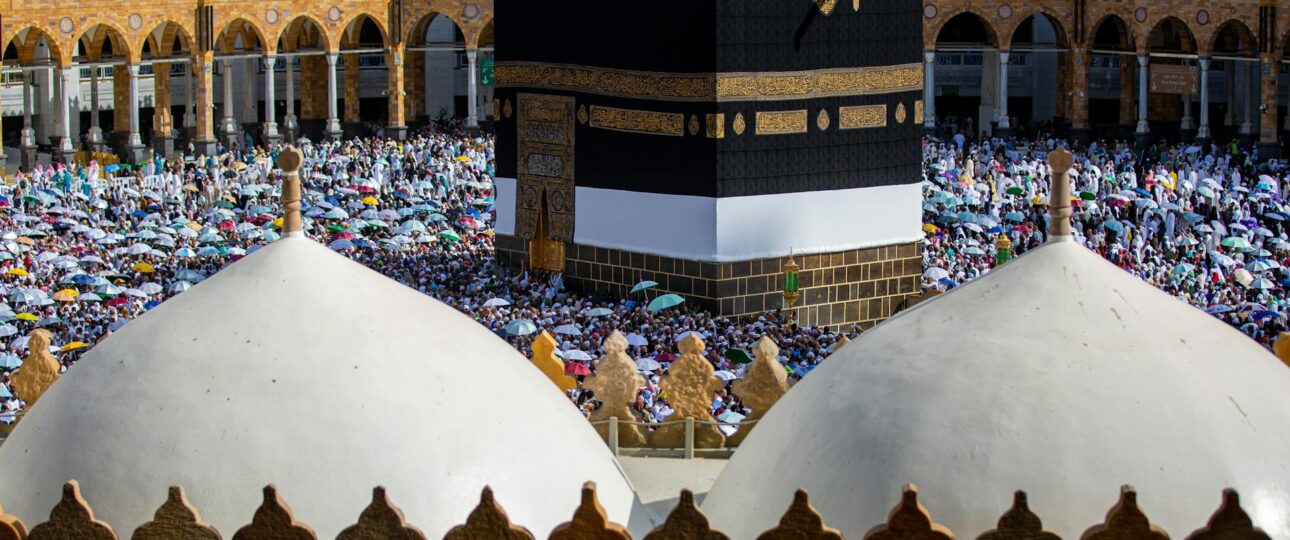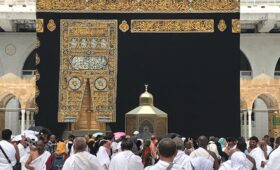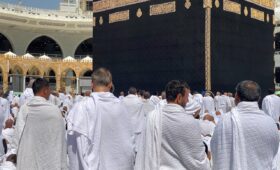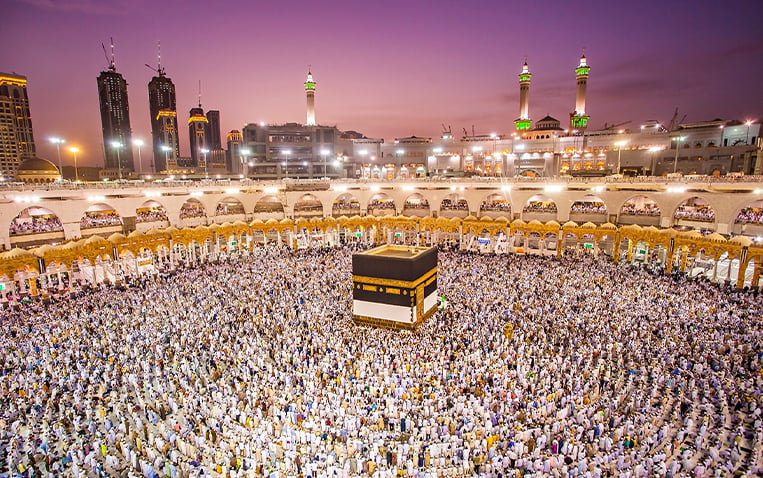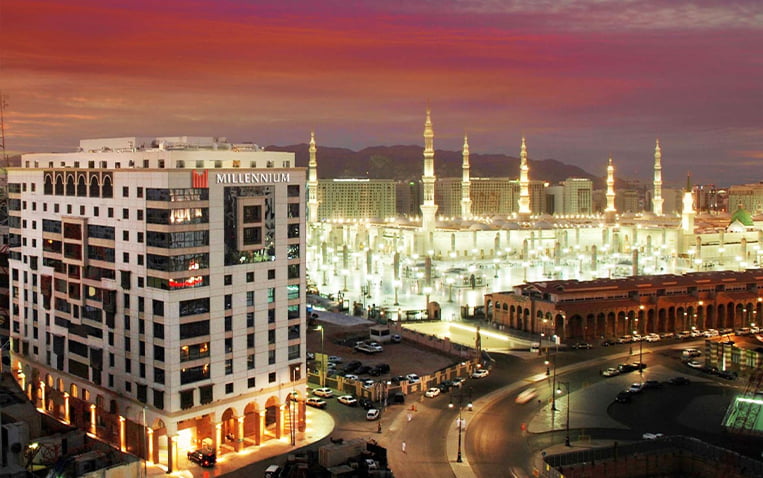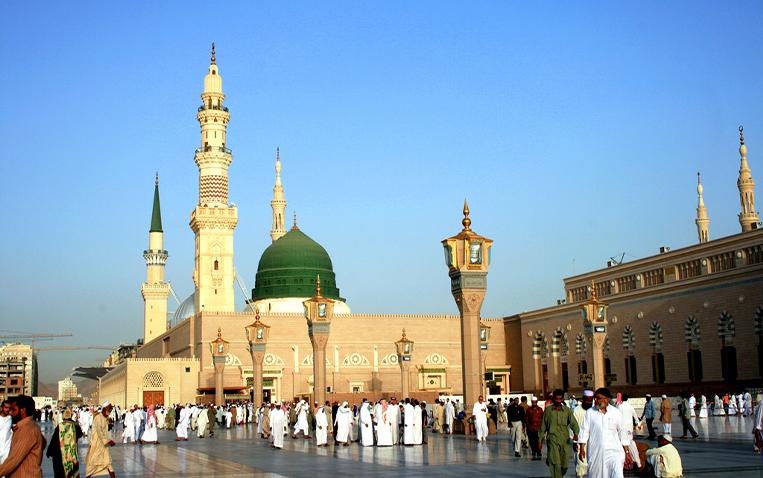Khana-e-Kaaba is the center of Makkah. In the Hejaz province in western Arabia, not far from the Red Sea, there is a small city called Makkah. In the center of the city is a small stone building about 60 feet long, 60 feet wide and 60 feet high. This city and its stone buildings have been known to world travelers since ancient times. This is Beytullah (Khana e Kaaba), the house of Allah.
Ancient History of Khana-e-Kaaba
Its purity and antiquity are older than history. The Khana e Kaaba is the sacred structure at the center of Islam’s most famous mosque, the Masjid al-Haram (makkah, Saudi Arabia), known as the most important tomb of Muslims, this square structure is elegantly covered with cotton fabric. Khana-e-Kaaba, also known as Kaaba-i Musharraf, is the final destination of pilgrims performing Hajj and Umrah.
No place in the world is more revered, central or sacred to many people than Makkah. By any objective measure, this valley in the Arabian Hejaz region is the most famous place in the world. Thousands of people walk around the Khana-e-Kaaba in the heart of the Holy Spirit 24 hours a day. Millions of homes are decorated with its paintings, and more than a million people pray Namaz here five times a day.
Khana-e-Kaaba in the time of Hazrat Ibrahim (A.S)
During the time of Prophet Ibraham (A.S), the Khana e Kaaba was rebuilt according to the instructions of Allah. Ibraham (A.S), along with his son Ismael (A.S), followed Allah’s instructions and restored the house to its original form, restoring its status as a place of worship. This reconstruction removed idols and various customs, making the Khana e Kaaba a sacred place for the worship of Allah alone.
As part of this innovation, a black stone, believed to have come down from heaven and given to Ibraham (A.S) by Jabriel (A.S), was placed in the corner of the Khana e Kaaba. This important event confirms the sanctity and importance of the Khana-e-Kaaba from the spiritual perspective of Islam and has become a symbol of unity and devotion for generations.
Muslim Dynasties and Their Contributions to Khana-e-eKaaba
Historically, Islamic dynasties have played an important role in preserving the history of the Khana-e-Kaaba. Leaders and rulers of various dynasties, including the Abbasids and Ottomans, contributed to the maintenance, renovation and expansion of this structure. Abbasid Mahdi and Ottoman Sultan IV. Caliphs such as Murad had repairs done to ensure the integrity of the Kaaba.
These efforts aim to encourage the growing number of pilgrims and preserve the sanctity of the Holy Land. Their contributions not only improved the Kaaba’s physical structure, but also preserved the Kaaba’s spiritual significance, securing its status as a place of Islamic worship and pilgrimage.
Spiritual Meaning of Khana-e-Kaaba Central Role in Islamic Worship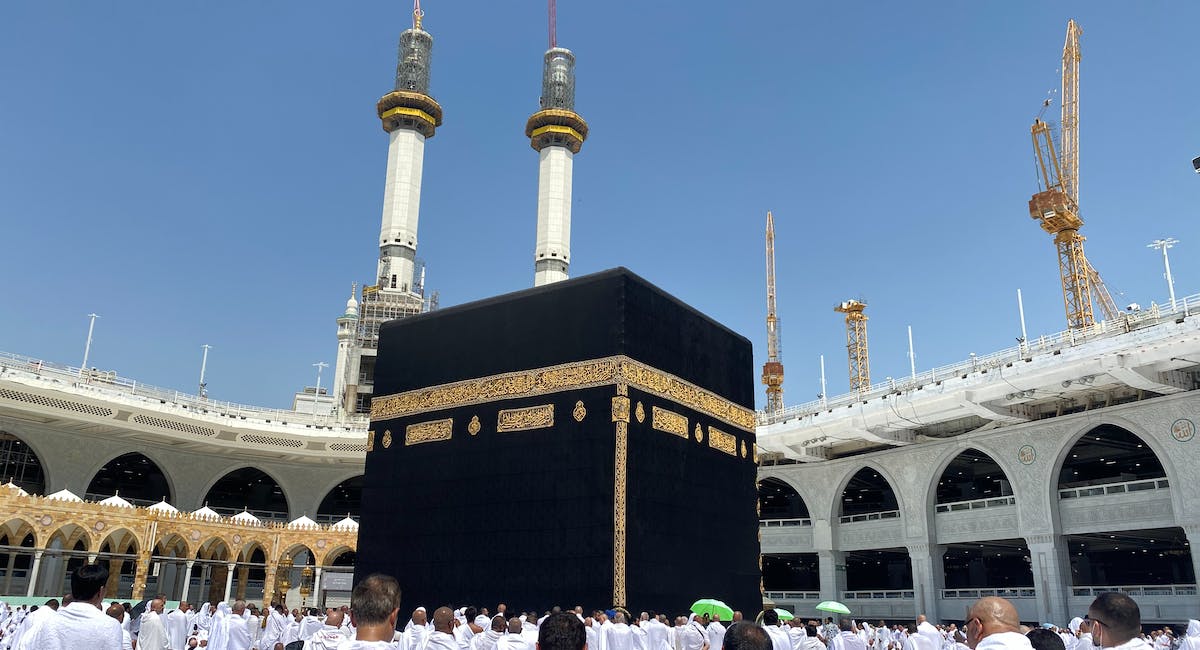
Khana e Kaaba is an important place of spiritual worship in Islam and play an important role in the daily prayers (salah) of Muslims worldwide. Believers all over the world recite prayers expressing unity and solidarity as they walk towards the Kaaba. The Khana-e-Kaaba is also the pilgrimage site for Hajj and Umrah.
Every year, millions of people come there to perform the sacred ritual to confirm their faith and devotion. The historical connection with the Prophet Ibraham (A.S) and the Hajar demonstrates the important role of the Kaaba in the Islamic faith and inspires admiration by uniting believers in their worship and spirituality.
Pilgrimage Unity in Hajj and Umrah Rituals
Khana e Kaaba play an important role in Hajj and Umrah pilgrimages and promote unity among millions of Muslims worldwide. During the Hajj, pilgrims perform circumambulation (circle) and other rituals around the Khana e Kaaba, which symbolizes the unity and equality of Allah.
The Umrah pilgrimage involves similar rituals, albeit on a smaller scale, with the aim of strengthening the spiritual connection with the Kaaba. Both religions emphasize obedience to Allah and spiritual purification. They see the Khana e Kaaba as a unifying force that go beyond geographical and cultural boundaries and unites believers in their passion and desire for Allah.
Modern Development Efforts: Khana-e-Kaaba in Contemporary Times
Nowadays, Khana e Kaaba has been developed and maintained in a modern way by the government of Saudi Arabia. The plans are designed to accommodate the increasing number of pilgrims while preserving the sanctity and heritage of the Khana-e-Kaaba. The project includes the expansion of the Masjid al-Haram around the Khana e Kaaba, the construction of hotels and the improvement of infrastructure to ensure the safety and comfort of pilgrims.
Advanced technology is used to manage the crowds and continuous improvements are made to ensure the integrity of the structure. These efforts reflect the importance of the Kaaba and the desire to facilitate the spiritual journey of pilgrims in the country today.
Black Stone: The Religious Meaning of Khana-e-Kaaba
In Islamic tradition, the Black Stone is known as Hajra al Aswad, a highly worshiped sacred antique situated in one corner of the Khana-e-Kaaba, has profound religious significance. Symbolic of divine kindness and blessings, Muslims believe it was handed to Prophet Ibrahim (A.S) by the angel Jabriel (A.S). During Tawaf (circumambulation), touching or kissing the Black Stone is a profoundly spiritual act performed to ask for forgiveness and blessings.
Its heavenly origin and connection to Prophet Ibrahim (A.S) increases its religious significance, denoting purity, oneness, and the connection between humanity and the divine. When pilgrims visit the Khana-e-Kaaba, the Black Stone is revered and feels a sense of wonder and devotion. It is a symbol of spiritual connection and dedication.
Historical Journey: From Antiquity to Present Reverence
The history of Khana-e-Kaaba traces the incredible narrative from ancient times to its venerable state today. It is said to date from the time of Hazrat Adam (A.S) and was later rebuilt by Prophets Ibraham and Ishmael (A.S), cementing its importance as a sacred place for monotheistic worship.
It has survived natural disasters throughout history and preserved its sanctity by being renewed by various Islamic dynasties (Khana e Kaaba development and preservation were greatly helped by Islamic dynasties. Abbasid and Ottoman rulers among others carried out additions and repairs to preserve the sacred site’s sanctity, undertake its structural honesty and meet the demands of pilgrims).
Today, the Khana-e-Kaaba is the focal point of Muslim unity and devotion, attracting millions of people each year for Hajj and Umrah pilgrimages. His way of life reflects the continuity, spiritual protection and respect that embody the millennia-old unbreakable bond between Christians and their common religious heritage.
Conclusion
The significance and spiritual existence ingrained in Islamic tradition are shown by the history of Khana-e-Kaaba. The Kaaba has evolved from its mythical beginnings connected to the Prophet Adam (A.S) to the prophetic reappearance of Ibraham and the Ishmaels (A.S). Today, it is a symbol of believer devotion. Millions of Muslims worldwide revere it as a site of worship and pilgrimage because Islamic rulers have helped to preserve it over the ages. The Black Stone, thought to have come from heaven, is still revered by pilgrims as a representation of God’s unity and plenty.
Khana e Kaaba, with its long and illustrious history, symbolizes the resilience, unity, and continuation of the Islamic faith. The current conservation initiatives of the The Saudi Arabian government exhibits its resolve to uphold the legacy of the Khana-e-Kaaba while accommodating the increasing influx of pilgrims.
In the end, the Khana-e-Kaaba functions as a spiritual body that connects muslims all over the world, bridging time, space, and cultural divides, in addition to its physical body. Its significance endures because it leads followers on their spiritual path and serves as a constant reminder of Islamic unity, dedication, and respect.
FAQ’s
What is the Khana e Kaaba?
The Kaaba, sometimes called Khana e Kaaba, is a cube-shaped building inside Mecca, Saudi Arabia’s Masjid al-Haram. It is the center of Muslim prayers and pilgrimages and is regarded as the most sacred location in Islam.
What is the significance of the Khana e Kaaba in Islamic history?
Islam places a great deal of religious significance to the Kaaba. It was originally created by Prophet Adam (A.S) as the first place of worship, and Prophet Ibrahim and Ismael (A.S) rebuilt it later as a sanctuary for worshiping one God. This is the story told in Islamic tradition.
Why is the Black Stone important at the Khana e Kaaba?
Muslims believe that the Black Stone, which is located in one of the Kaaba’s corners, originated in heaven and was handed to Prophet Ibrahim (A.S) by the angel Gabriel (A.S). It is regarded as a representation of the kindness and benefits of God and has enormous spiritual importance.
What role does the Khana e Kaaba play in Islamic worship?
During the five daily prayers, Muslims face Khana-e-Kaaba, which is the center of attention for believers worldwide. Additionally, it serves as the main heart for pilgrims to undertake the Hajj and Umrah, wherein particular rites are carried out as expressions of unity and devotion.
How has the Khana e Kaaba evolved throughout history?
Because of man-made changes and natural disasters, the Kaaba has undergone several expansions, repairs, and reconstructions over the ages. It was preserved and cared for by several Islamic rulers, including the Ottomans and Abbasids.

